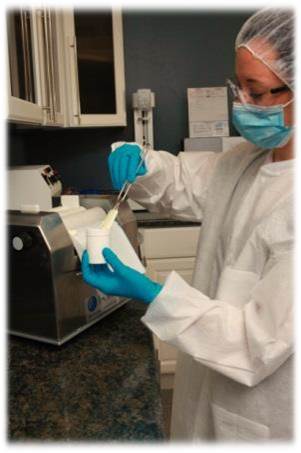WHAT IS COMPOUNDING?

We are all individuals and sometimes the “one-size fits all” approach isn’t beneficial when it comes to medications. Sometimes we need a customized solution. That’s where compounded medications come into the picture. They are “made from scratch,” which means individual pharmaceutical ingredients are mixed together in the exact strength, dosage form, and unique delivery system required for the patient.
Most patients with unique health needs can be challenging to healthcare providers that not even commercially manufactured medications can meet their needs. For these patients, personalized medication solutions – prescribed by licensed practitioners and prepared by trained, licensed pharmacists – are the only way to better health.
Working with a physician, a compounding pharmacist can meet individual needs of children, adults and even animals. Whether it’s an allergy to a dye or ingredient, a need for a different strength, or a preference for a different dosage form, compounding pharmacists provide patients with solutions to their medication needs.
| Our compounding professionals can prepare: | |
|---|---|
| a. | Medications that are not commercially available. |
| b. | Unique dosage forms containing the desired medication for each individual. |
| c. | Medications in dosage forms such as transdermal gels, troches, and lollipops that are not commercially available. |
| d. | Medications free of problem-causing excipients such as dyes, sugar, lactose, or alcohol. |
| e. | Combinations of various compatible medications into a single dosage form for easier administration and improved compliance. |
| WHY COMPOUNDING? | |
|---|---|
| a. | When needed medication are discontinued by or generally unavailable from pharmaceutical companies, often because the medications are no longer profitable to manufacture; |
| b. | When the patient is allergic to certain preservatives, dyes or binders in available off-the-shelf medications; |
| c. | When treatment requires tailored dosage strengths for patients with unique needs (for example, an infant); |
| d. | When a pharmacist can combine several medications a patient is taking to increase compliance; |
| e. | When a patient cannot ingest the medication in its commercially available form and a pharmacist can prepare the medication in cream, liquid or other form that the patient can easily take; and |
| f. | When medications require flavor additives to make them more palatable for some patients, most often, children |
| COMPOUNDING APPLICATIONS | |
|---|---|
| a. | Hormone therapy for women |
| b. | Hormone therapy for men |
| c. | Pain Management |
| d. | Dermatology |
| e. | Wound Care Management |
| f. | Sports Medicine |
| g. | Hospice/Palliative care; |
| h. | Pediatrics; |
| i. | Podiatry |
| j. | Dental; |
| k. | Medication flavoring |
| l. | Veterinary compounds for pets and exotic animals |